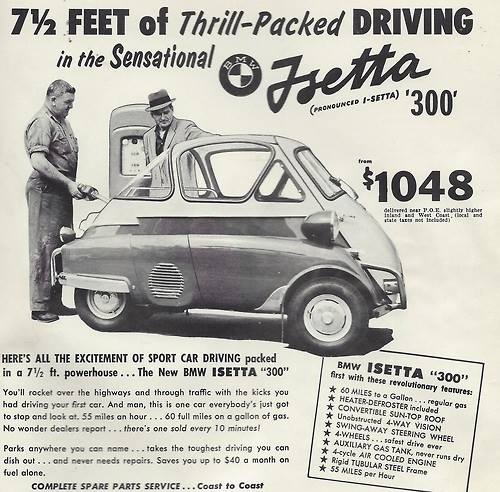
The minute I saw this vintage add on my Facebook wall, found and posted by my FB friend Grandma Retro, I immediately remembered having seen one of these unique little vehicles in person. Picking through my vintage vehicle memories, I headed for Flickr and my photos taken at Cars in the Park, July 23, 2011. That summer, just months after Mama had died in January, over a dozen Saturdays I thankfully engaged my mind with the glories afforded by vintage vehicles, hundreds of them. Yet, I saw only one Isetta 300, easily for me the most unique vehicle that I can remember from those special Saturdays. Here are photos I took from all around the butter-colored beauty. Yes, I believe it's beautiful. How about you? My biggest regret? I didn't try to find the owner and ask if I could get a photo with the door closed. Ah, the joys of hindsight.
However, we've all been given a great gift--a YouTube video called Isetta 300 Drive which is this actual Isetta 300--I know because the license plates match. I didn't find it until after I'd already blanked out the plates on the photos that showed it--that's why you see two versions of the first photo, I wanted you to be able to see the plate so you'd get to have the same grin that I had when this man walked around the car and showed the license plate ! I read Oregon and got all excited, headed right back over to Flickr and checked it out. Yea!
Here is some info specific to the BMW Isetta 300 that I found online: In production from 1956 to 1962, with 161,360 produced. The engine is a 298cc single-cylinder 4-stroke with 53 mph as the top speed. The transmission is a 4-speed manual with reverse.
In 1956, the government of the Federal Republic of Germany changed the regulations for motor vehicles. Class IV licences issued from that time onward could only be used to operate small motorcycles and could no longer be used to operate motor vehicles with a capacity of less than 250 cc. At the same time, the maximum capacity allowed for the Isetta's tax category was 300 cc. Class IV licences issued before the change in the regulations were grandfathered and allowed to be used as before.
This change in regulations encouraged BMW to revise their Isetta microcars. In October 1956, the Isetta Moto Coupe DeLuxe (sliding-window Isetta) was introduced. The bubble windows were replaced by longer, sliding side windows. The engineers had enlarged the single cylinder to a 72 mm (2.8 in) bore and 73 mm (2.9 in) stroke, which gave a displacement of exactly 298 cc; at the same time, they raised the compression ratio from 6.8 to 7.0:1. As a result, the engine power output rose to 10 kW (13 hp) at 5200 rpm, and the torque rose to 18.4 N·m (13.6 ft·lbf) at 4600 rpm. The maximum speed remained at 85 km/h (53 mph), yet there was a marked increase in flexibility, chiefly noticeable on gradients.
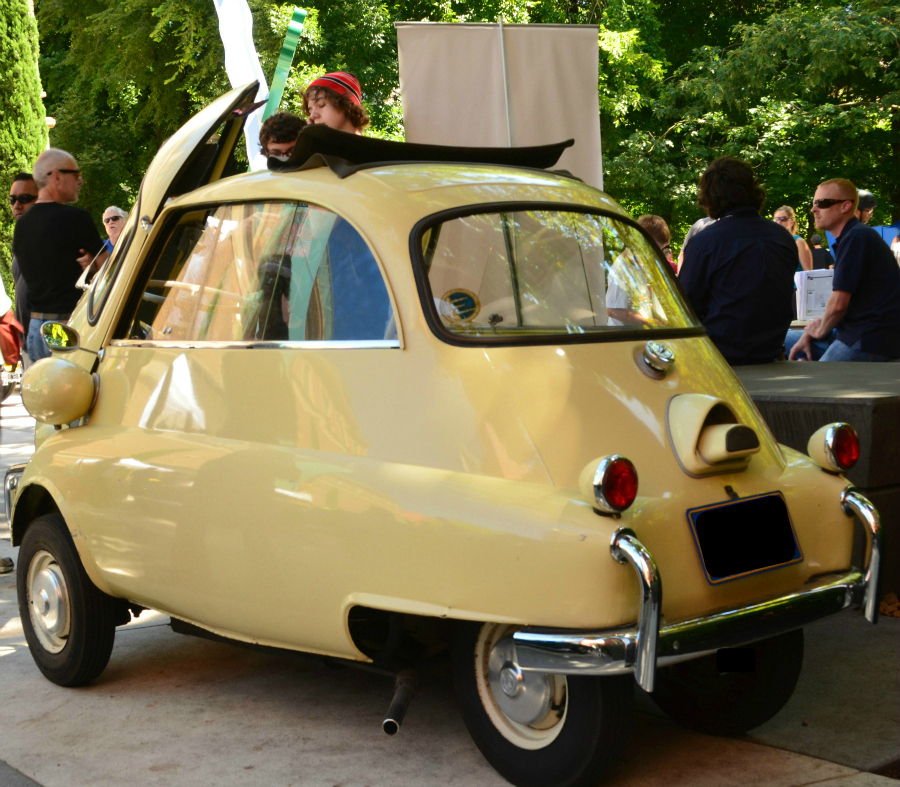

I started grinning the minute I laid eyes on the BMW Isetta 300.
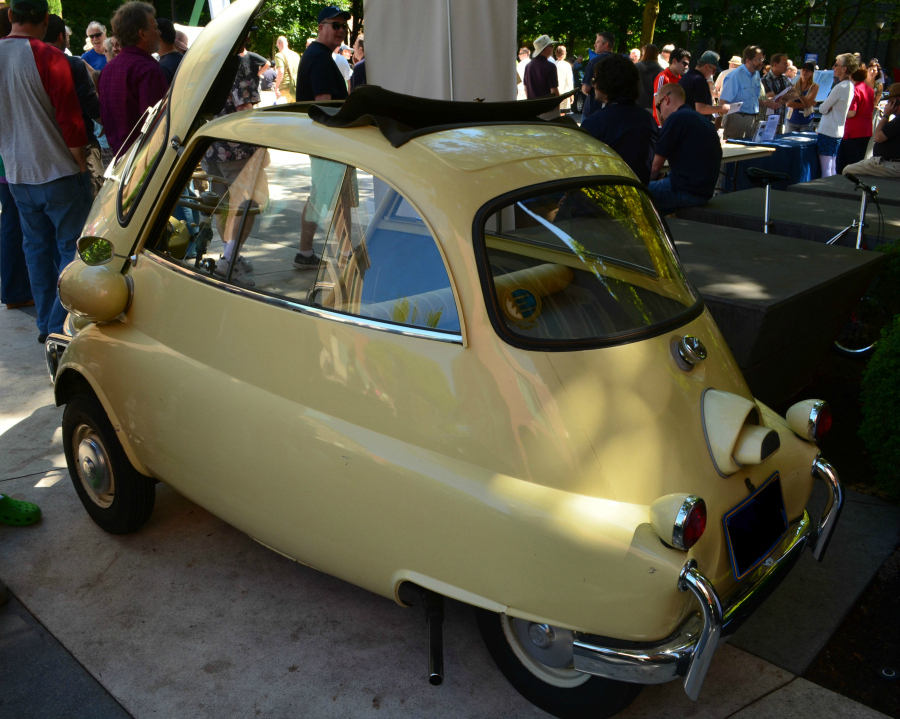
Info I found on the Web: The Isetta is an Italian-designed microcar built under licence in a number of different countries, including Spain, Belgium, France, Brazil, Germany, and the United Kingdom. Because of its egg shape and bubble-like windows, it became known as a bubble car, a name later given to other similar vehicles.

Info I found on the Web: The BMW Isetta was in 1955 the world's first mass-production 3-Litres/100 km car. It was the top-selling single-cylinder car in the world, with 161,728 units sold.
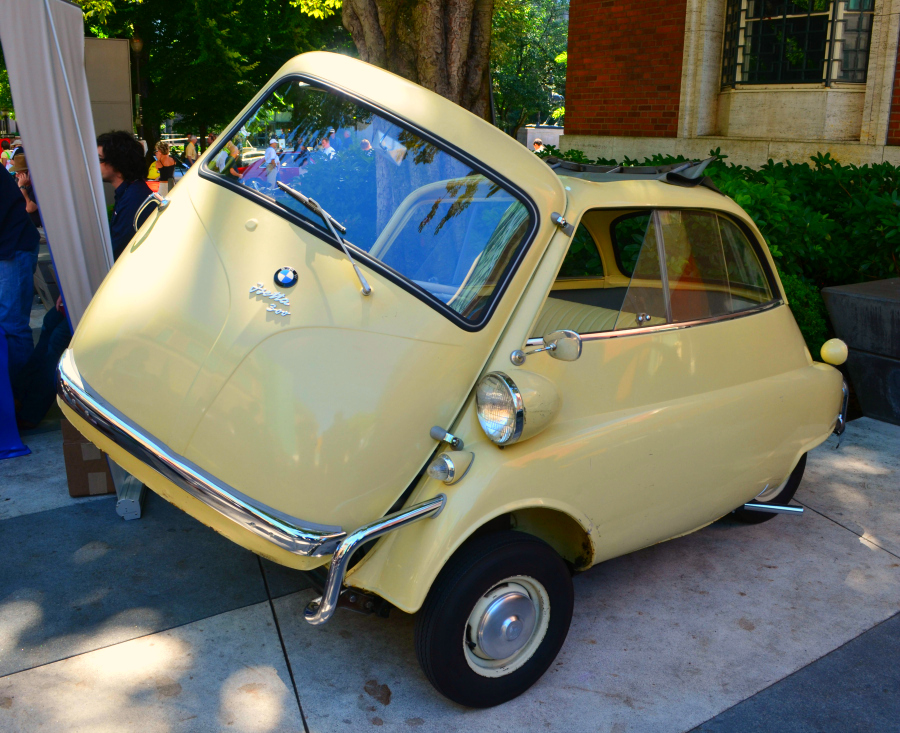
Info I found on the Web: The Isetta caused a sensation when it was introduced to the motoring press in Turin in November 1953, it was unlike anything seen before.

Info I found on the Web: Small (only 2.29 m (7.5 ft) long by 1.37 m (4.5 ft) wide) and egg-shaped, with bubble-type windows, the entire front end of the car hinged outwards to allow entry. In the event of a crash, the driver and passenger were to exit through the canvas sunroof.
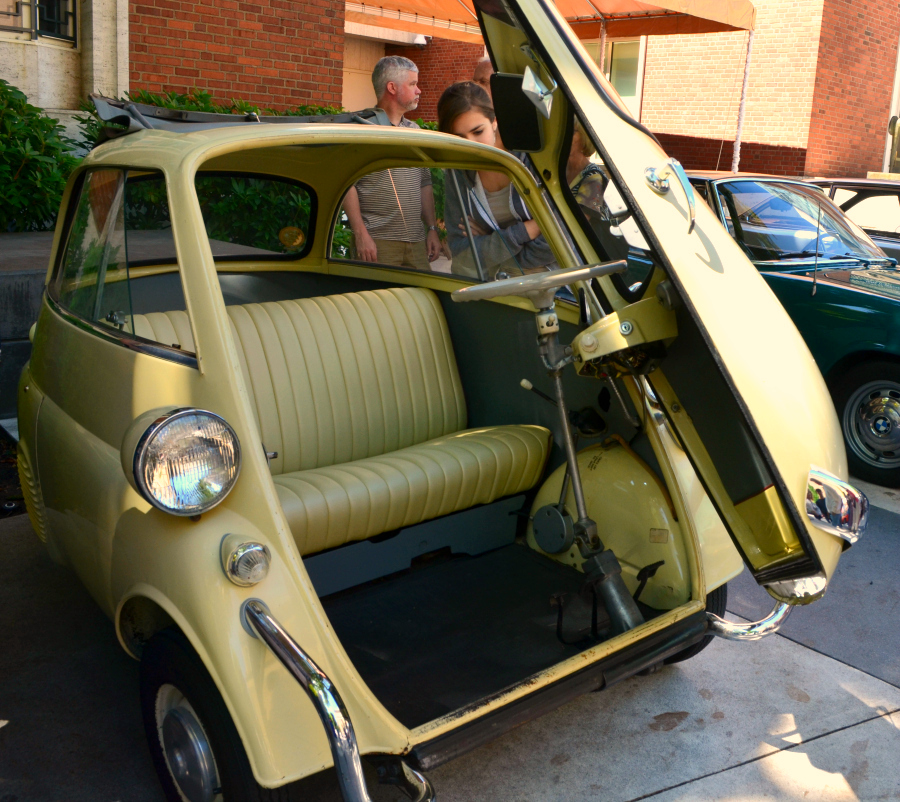
Info I found on the Web: The steering wheel and instrument panel swung out with the single door, as this made access to the single bench seat simpler. The seat provided reasonable comfort for two occupants, and perhaps a small child. Behind the seat was a large parcel shelf with a spare wheel located below. A heater was optional, and ventilation was provided by opening the fabric sunroof.
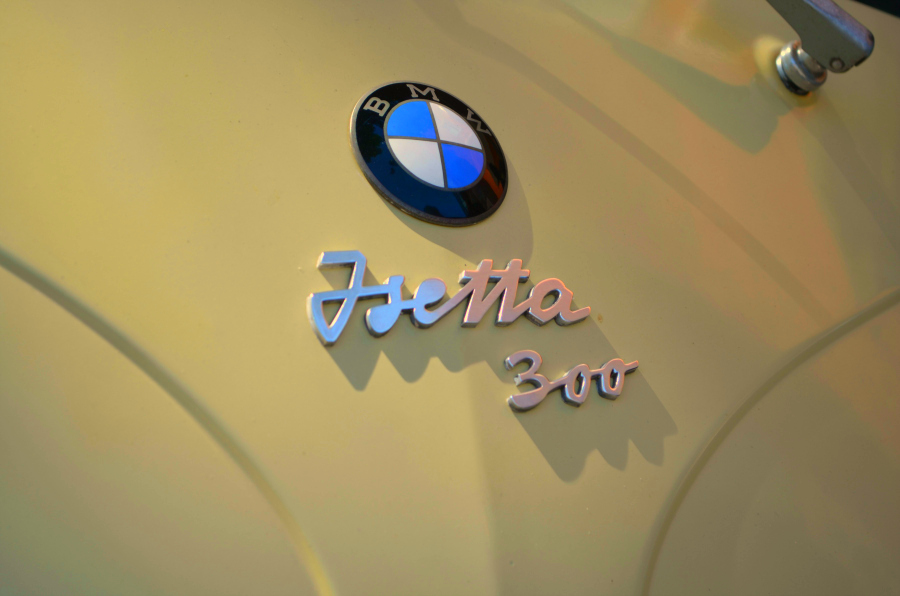
Info I found on the Web: The car originated with the Italian firm of Iso SpA. In the early 1950s the company was building refrigerators, motor scooters and small three-wheeled trucks. Iso's owner, Renzo Rivolta, decided he would like to build a small car for mass distribution.[9] By 1952 the engineers Ermenegildo Preti[10] and Pierluigi Raggi had designed a small car that used the motorcycle engine of the Iso Moto 200 and named it Isetta—an Italian diminutive meaning little ISO. BMW began talking with Rivolta in mid-1954 and bought not just a licence but the complete Isetta body tooling as well. Rivolta did not stop with licensing the Isetta to BMW. He negotiated similar deals with companies in France and Brazil. After constructing some 1,000 units, production of the Italian built cars ceased in 1955, although Iso continued to build the Isetta in Spain until 1958.
No comments:
Post a Comment